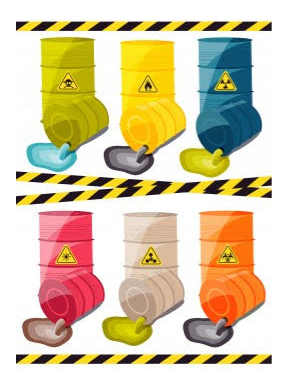Blog
-

New OSHA/ NIOSH Ototoxicity and Hearing Loss Guidelines Published.
 26 Mar , 2018
26 Mar , 2018
New OSHA/ NIOSH Ototoxicity and Hearing Loss Guidelines Published.
A document posted by the National Institute for Occupational Safety and Health (NIOSH) and credited both to NIOSH and the Occupational Safety and Health Administration (OSHA) offers guidance for preventing hearing loss that is caused by ototoxic chemicals and noise exposure, OSHA announced on its website. The Department of Health and Human Services (DHHS) (NIOSH) Publication Number 2018-124 lists five examples of substance classes of ototoxic chemicals:
Pharmaceuticals,
Solvents,
Asphyxiants,
Nitriles,
Metals and compounds.Mercury compounds and lead are among the chemicals listed in the metals and compounds class. The asphyxiants listed include carbon monoxide, tobacco smoke, and hydrogen cyanide and its salts.
“There is growing concern among occupational health and safety professionals that ototoxicant-induced hearing loss may go unrecognized since the measure for hearing loss does not indicate the cause,” the five-page document states. “For example, audiometric tests are powerful tools that show hearing impairments (ie, threshold shifts); however, they do not differentiate between noise and ototoxic causes.”
It points out that harmful exposure to ototoxicant chemicals can occur through inhalation, ingestion, or skin absorption. Workers’ risk of hearing loss is increased when they’re exposed to the chemicals while working around elevated noise levels, it says, adding that the hearing loss may be temporary or permanent, depending on the level of noise, the dose of the chemical, and the duration of exposure, and such impairment affects many occupations and industries, from machinists to firefighters.
DIRECTLY FROM THE OSHA WEBSITE, SOME ELEMENTS OF THIS NEW DOCUMENT BELOW:
Millions of workers are exposed to noise in the workplace every day and when uncontrolled, noise exposure may cause permanent hearing loss. Research demonstrates exposure to certain chemicals, called ototoxicants, may cause hearing loss or balance problems, regardless of noise exposure. Substances including certain pesticides, solvents, and pharmaceuticals that contain ototoxicants can negatively affect how the ear functions, causing hearing loss, and/or affect balance.
The risk of hearing loss is increased when workers are exposed to these chemicals while working around elevated noise levels. This combination often results in hearing loss that can be temporary or permanent, depending on the level of noise, the dose of the chemical, and the duration of the exposure. This hearing impairment affects many occupations and industries, from machinists to firefighters.
Effects on Hearing:
Harmful exposure to ototoxicants may occur through inhalation, ingestion, or skin absorption. Health effects caused by ototoxic chemicals vary based on exposure frequency, intensity, duration, workplace exposure to other hazards, and individual factors such as age. Effects may be temporary or permanent, can affect hearing sensitivity and result in a standard threshold shift. Since chemicals can affect central portions of the auditory system (e.g., nerves or nuclei in the central nervous system, the pathways to the brain or in the brain itself), not only do sounds need to be louder to be detected, but also they lose clarity. Specifically, speech discrimination dysfunction, the ability to hear voices separately from background noise, may occur and involve: Compressed loudness: sound distortion.
Frequency resolution: the inability to differentiate two sounds with similar frequency.
Temporal resolution: the inability to detect time gaps between sounds.
Spatial resolution: the inability to localize sound.
Speech discrimination dysfunction can also make working in noisy environments difficult and increase the risk of workplace injuries due to an inability to hear co-workers, environmental sounds and warning signals.
Combined exposure: health effects below the noise PEL:
There is growing concern among occupational health and safety professionals that ototoxicant-induced hearing loss may go unrecognized since the measure for hearing loss does not indicate the cause. For example, audiometric tests are powerful tools that show hearing impairments (i.e., threshold shifts); however, they do not differentiate between noise and ototoxic causes.
Hearing loss can be even greater with exposure to both ototoxic chemicals and noise than exposure to either noise or the ototoxic chemical alone. Many ototoxic substances have a greater-than- additive (e.g., synergistic) effect on hearing loss with noise exposure and in particular with impulse noise. Several studies have suggested that some ototoxic chemicals, such as certain solvents, might exacerbate noise-induced hearing loss even though the noise level is below OSHA’s Permissible Exposure Limit (PEL).OSHA standards require employers to maintain exposure to the specific substance at or below the PEL. However, synergistic effects from the combined ototoxicant and noise exposure could result in hearing loss when exposures are below the PEL.
Contact OSHA
Under the Act, employers are responsible for providing safe and healthful workplaces for their employees. OSHA’s role is to ensure these conditions for America’s working men and women by setting and enforcing standards, and providing training, education and assistance. For more information, visit www.osha.gov or call OSHA at 1-800-321- OSHA (6742), TTY 1-877-889-5627.Contact NIOSH
To receive documents or more information about occupational safety and health topics, please contact NIOSH at 1-800-CDC-INFO (1-800-232-4636), TTY 1-888-232-6348, email: cdcinfo@cdc.gov or visit the NIOSH website at: www.cdc.gov/niosh.Source: OSHA
Image credit:©Alena Dubinets|Dreamstime.com





























































































































































































































































































































































































































































































































































































